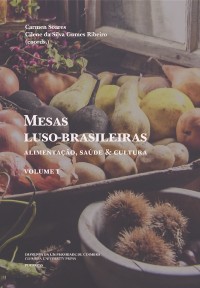Please use this identifier to cite or link to this item:
https://hdl.handle.net/10316.2/45240| DC Field | Value | Language |
|---|---|---|
| dc.contributor.author | Junior, Ademir Ribeiro | |
| dc.contributor.author | Lima, Tania Andrade | |
| dc.date.accessioned | 2019-01-29T15:23:53Z | |
| dc.date.accessioned | 2020-09-04T21:50:06Z | - |
| dc.date.available | 2019-01-29T15:23:53Z | |
| dc.date.available | 2020-09-04T21:50:06Z | - |
| dc.date.issued | 2018 | - |
| dc.identifier.isbn | 978-989-26-1718-3 | |
| dc.identifier.isbn | 978-989-26-1721-3 (PDF) | |
| dc.identifier.issn | 2183-6523 | |
| dc.identifier.uri | https://hdl.handle.net/10316.2/45240 | - |
| dc.description.abstract | More than a simple act of nourishment, we can interpret eating from an archaeological point of view, as the primordial activity of human societies in which both its materiality and practices are cloaked with symbolism and meanings, which simultaneously reflect and transform individuals and social structures. The symbolic and active nature of eating is visible in the lineages of the oldest Ketu nation candomblé temples of Salvador and their descendants. These temples are of an African cultural origin, where gods mainly originating from the Yoruba pantheon Nigeria and Benin are celebrated. From a bibliographical research, participant observations of public and private religious ceremonies and interviews with specialists who hold traditional knowledge on eating in candomblé temples, we intend to: a) succinctly present the findings of research performed in Brazil related to the eating habits of the enslaved population; b) relate the intangible cultural legacy to the material culture which provides it with substance and support; c) classify the different types of food and analyze the main dishes intended for the orishas in Ketu nation temples in Bahia, summarizing historical information about the composition of the ingredients used. | eng |
| dc.description.abstract | Mais que o simples ato de nutrir-se, podemos entender a alimentação, do ponto de vista da arqueologia, como uma atividade primordial das sociedades humanas, na qual tanto a sua materialidade quanto as suas práticas se revestem de simbolismos e significados, que ao mesmo tempo refletem e transformam os indivíduos e as estruturas sociais. Esse caráter simbólico e ativo da alimentação é visível nas linhagens dos terreiros de candomblé mais antigos da nação Ketu de Salvador e seus descendentes. Esses terreiros são templos religiosos de matriz cultural africana onde são celebrados principalmente os deuses originários do panteão iorubá, da Nigéria e do Benim. A partir de pesquisa bibliográfica, de observações participantes de cerimônias religiosas públicas e privadas e de entrevistas com informantes que detêm o conhecimento tradicional sobre a alimentação nos terreiros de candomblé, pretendemos: a) apresentar sucintamente o levantamento das pesquisas realizadas no Brasil relacionadas à alimentação da população de origem africana escravizada e das comunidades afro-brasileiras; b) relacionar o legado cultural intangível, com a cultura material que lhe dá substância e suporte; c) classificar os diferentes tipos de comidas e analisar os principais pratos destinados aos orixás, sintetizando informações históricas sobre a constituição dos ingredientes usados. | por |
| dc.language.iso | por | - |
| dc.publisher | Imprensa da Universidade de Coimbra | por |
| dc.relation.ispartof | http://hdl.handle.net/10316.2/45206 | por |
| dc.rights | open access | - |
| dc.subject | ritual food | eng |
| dc.subject | candomblé | eng |
| dc.subject | materiality | eng |
| dc.subject | archaeology of the African Diaspora | eng |
| dc.subject | ethnoarchaeology | eng |
| dc.subject | alimentação ritual | por |
| dc.subject | candomblé | por |
| dc.subject | materialidade | por |
| dc.subject | arqueologia da Diáspora Africana | por |
| dc.subject | etnoarqueologia | por |
| dc.title | O que comem os orixás nos terreiros de candomblé de nação Ketu de Salvador, Bahia: uma perspectiva etnoarqueológica | por |
| dc.title.alternative | What the orishas eat in the Ketu nation candomblé temples of Salvador, Bahia: an ethnoarcheological perspective | eng |
| dc.type | bookPart | por |
| uc.publication.firstPage | 301 | - |
| uc.publication.lastPage | 331 | - |
| uc.publication.location | Coimbra | por |
| dc.identifier.doi | 10.14195/978-989-26-1721-3_13 | - |
| uc.publication.digCollection | PB | por |
| uc.publication.orderno | 13 | - |
| uc.publication.area | Artes e Humanidades | por |
| uc.publication.bookTitle | Mesas luso-brasileiras: alimentação, saúde & cultura. vol. I | - |
| uc.publication.manifest | https://dl.uc.pt/json/iiif/10316.2/45240/200560/manifest?manifest=/json/iiif/10316.2/45240/200560/manifest | - |
| uc.publication.thumbnail | https://dl.uc.pt/retrieve/11010163 | - |
| uc.publication.parentItemId | 55086 | - |
| uc.itemId | 68116 | - |
| item.fulltext | With Fulltext | - |
| item.grantfulltext | open | - |
| Appears in Collections: | Mesas luso-brasileiras: alimentação, saúde & cultura. vol. I | |
Files in This Item:
| File | Description | Size | Format | |
|---|---|---|---|---|
| o_que_comem_os_orixas_nos_terreiros_de_candomble_de_nacao_ketu_de_salvador.pdf | 3.76 MB | Adobe PDF |  |
Items in DSpace are protected by copyright, with all rights reserved, unless otherwise indicated.
